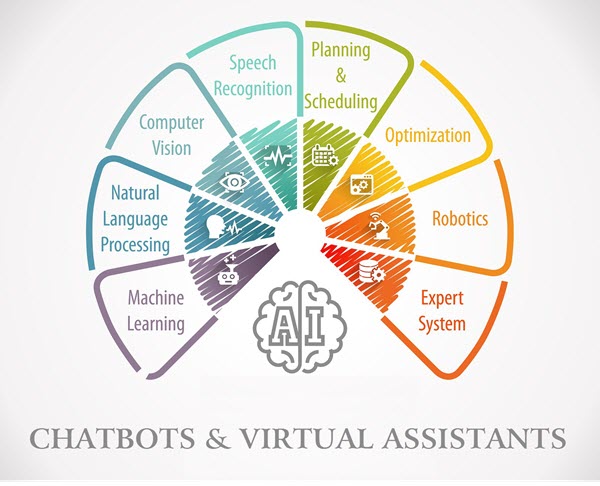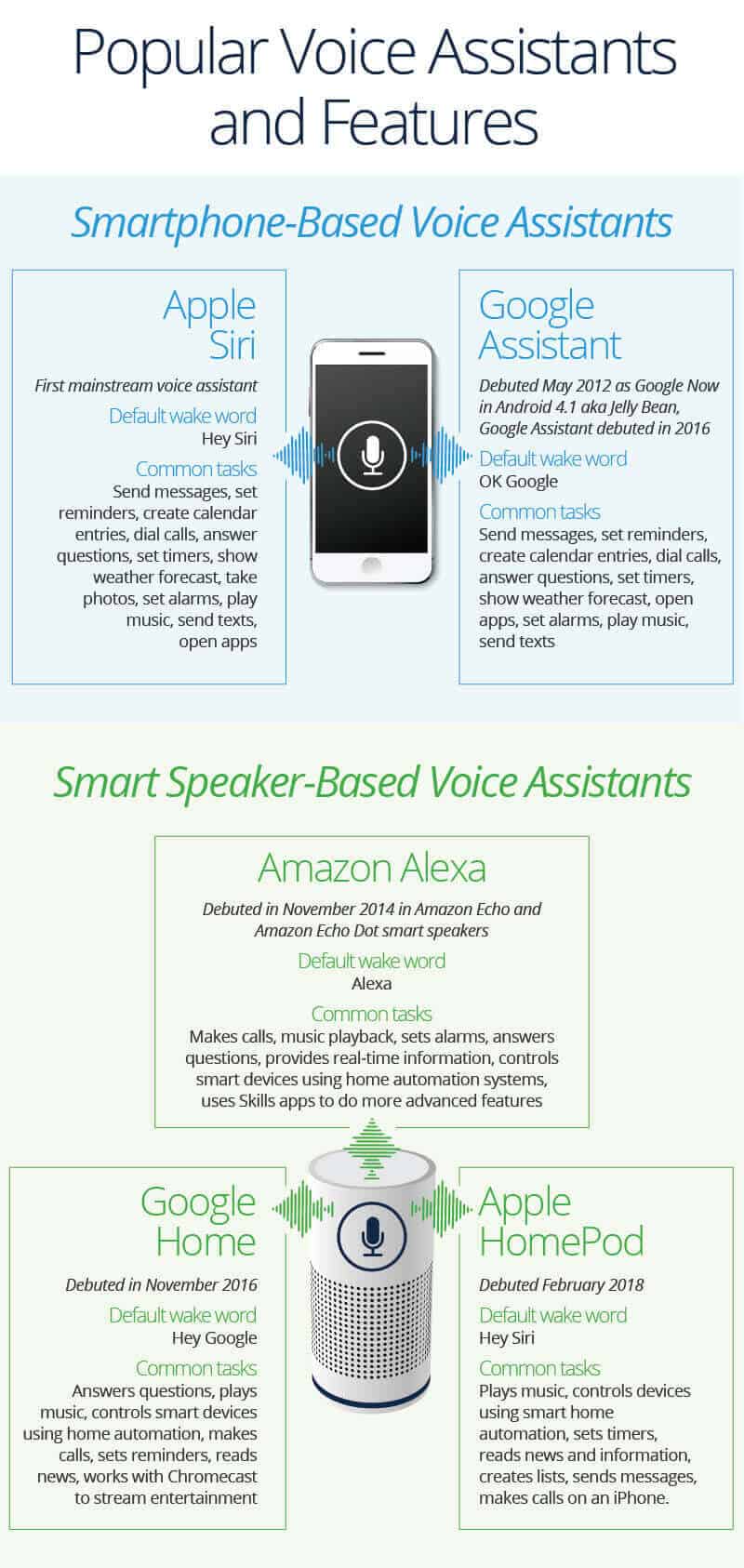How AI Is Propelling the Intelligent Virtual Assistants Into a New Epoch?
What Is an Intelligent Virtual Assistant (IVA)?
By 2025, the virtual assistant market size is expected to grow to $25.63 billion.
An intelligent virtual assistant (IVA) is a piece of conversational software that is driven by AI that employs analytics and machine learning to have natural-sounding conversations with users to aid them in locating information, performing an action, or finishing a job. Information gleaned from databases, client histories, connected apps, and prior contacts is used by IVAs to tailor their chats to each user.
Using natural language understanding (NLU), the system can have more nuanced conversations with consumers via digital and audio channels, answering more questions and fulfilling more requests than a chatbot could. IVAs can speak with users in a variety of languages and translate what they say.
The Intelligent Virtual Assistant (IVA) is a chatbot powered by AI that can provide customized replies to each user based on their profile data, prior interactions, and geographic location, all while drawing on the company’s knowledge base and human expertise.
The Intelligence Assistant works as part of the Intelligence Unit’s tactical and administrative intelligence capabilities to effectively identify issues and risks across all aspects of local trading standards operations.
Top AI Assistants
Intelligent Virtual Assistants- A Brief History

Siri’s predecessor, voice recognition technology, had been present since far before 2011. In 1962, IBM debuted a program called Shoebox at the Seattle World’s Fair. It was about the size of a shoebox, yet it could do basic algebra, identify 16 words, and count to 9.
With major funding from the United States Department of Defense and its Defense Advanced Research Projects Agency (DARPA), scientists at Carnegie Mellon University in Pittsburgh, Pennsylvania, developed Harpy in the 1970s. It had the vocabulary of a three-year-old, or 1,011 words, in its dictionary.
Once firms came out with technologies that could detect word sequences, corporations began to design applications for the technology. In 1987, Worlds of Wonder released a doll named Julie that could hear a child’s speech and respond to it.
Products that made use of speech recognition were developed by firms like IBM, Apple, and others during the 1990s. In 1993, with the release of PlainTalk, Apple began incorporating voice recognition capabilities into their Macintosh computers. The first continuous dictation product, Dragon NaturallySpeaking, was released in April 1997. About one hundred words per minute were understood and converted to text. Voice recognition technology was first used in medical dictation equipment.
How Do Intelligent Assistants Work?
Up to 40% of businesses in the US use a virtual assistant.
Why Are Intelligent Assistants So Popular?
With 1.6 billion users by 2020, the market for AI-driven personal assistants and bots is expected to more than double in 2018.
Since their introduction in 2014, voice assistants have gained widespread adoption, to the point that many of us treat them like members of our own families. They employ artificial intelligence (AI) to make our day-to-day easier and go a long way towards improving the lives of those with disabilities.
The following are a few parameters:
- Bridging human and technology
Every advantage of digital aids fits into a larger whole, of course. There is a correlation between the rise of voice assistants and developments in AI, the Internet of Things, autonomous vehicles, and new interfaces that use text, audio, visual, and tactile signals. The smart agent is a useful resource in the advanced technological world of today.
- Increased efficiency
Last on the list, but not least, is the very basic capabilities of AI assistants. Designed to make people’s lives easier by doing mundane activities, digital assistants are already competitive in several fields. An AI-powered assistant named Amy, for instance, may automate meeting scheduling and save time in the workplace by skipping over communications. Amplification of the bot’s reach and the acquisition of the ability to glean information from Slack, Alexa, and WeChat are imminent.
- Language-based user interface
When compared to online or smartphone interfaces, which typically have a learning curve, natural language is more straightforward. With a personal assistant, users may ask questions more naturally, using speech or text, as opposed to selecting options from a list.
- Personalization
When it comes to digital goods, customization is crucial since it’s the surest way to keep customers coming back for more. But this advantage is further amplified with AI assistance.
- Rich knowledge base
The information available to personal assistants is vast. They can supply everything from general information found on Google to niche data collected in databases. Part of this advantage is based on digital agents’ potential for integration, adaptability, and self-learning. The market environment now also contributes to the other component.
- Enhanced degrees of interconnection
The one-of-a-kind link is enabled by the combination of two different technologies. Thanks to advancements in AI and the Internet of Things, there is now a whole new way for machines, people, and businesses to talk to one another. Considering the volume and possibilities of both markets, this will only rise in the future.
How to Get Started With an AI-powered Intelligent Virtual Agent

Setting up an AI chatbot and designing complex discussion flows used to require a lot of time and manpower, but nowadays it’s much simpler. A smart virtual assistant for customer service can now be set up in a matter of minutes, thanks to developments in generative AI and large language models (LLMs). Our generative AI-powered tool, UltimateGPT, operates as follows:
- The address of your online support hub is what you type in.
- Using AI, your bot for your support desk may be made in a matter of minutes.
- The bot may be tested in a demo setting or deployed immediately on your website.
Top 6 Characteristics of Intelligent Virtual Assistants
1. Best for customer query resolution
IVAs have enhanced comprehension and the capacity to deliver data-driven solutions, allowing them to meet the specific requirements of their users. Customers might pose nebulous queries like “What are smart chatbots?” or fire out lengthy phrases detailing their complaints. In-depth interactive virtual assistants (IVAs) answer consumers’ questions in greater depth than FAQ chatbots.
2. Asset for customer support team
AI chatbots have the potential to answer 80% of all customer questions.
Because of this, the customer service staff is already sold on IVAs. With virtual assistants on the horizon, customer service personnel may devote their attention to the jobs that truly require human intelligence. They can be in the right frame of mind and provide satisfactory answers to complicated issues at the moment they are being tackled.
3. prioritizing the customer
Customers now have less patience than ever for companies who take hours to respond. They have access to a worldwide market and consistently choose businesses that show appreciation for their patronage. IVAs get this, thus they let clients express themselves freely whenever they want in their native tongue. That is, IVAs are capable of comprehending complicated words, are available in several languages, and may be accessed at any time of day or night.
4. Contextual customer experience
Context is crucial in customer service, and IVAs know and remember this. Smart virtual chatbots can pick up just where a consumer left off, even if they transition to a different channel of contact. Collecting data and preserving knowledge helps IVAs avoid redundancy and offer speedy answers as per historical client behavior.
5. Emotional intelligence and customer sentiment analysis
Businesses require sentiment analysis and the ability to read customers’ minds. Here is an area where IVAs shine. IVAs interpret the feelings and goals of the client based on their speech patterns and phrase structures. This quality of IVAs allows them to provide the highest quality of service to their consumers.
6. Machine learning
With machine learning (ML) capabilities, IVAs learn and improve with every engagement with the consumers. As time goes on, kids can independently resolve a growing number of questions.
What Is the Difference Between an IVA and a Chatbot?
IVAs are more advanced, so they can deal with difficult jobs and yet provide individualized assistance to their customers. Chatbots excel at basic tasks and may be implemented in many different business settings.
This is because the capabilities of an IVA and a chatbot cover different ground. Intelligent virtual assistants (IVAs) are built to manage difficult tasks and may provide users with individualized advice, support, and help. However, chatbots are more commonly utilized for straightforward tasks like answering FAQs or directing users to the correct department.
There is a spectrum of intelligence that can be used by IVAs and chatbots. The AI and machine learning capabilities of IVAs are often higher than those of chatbots. This enables them to carry out sophisticated tasks, grasp contextual information, and grow as a result of previous encounters. IVAs may be used across several channels, including voice help, chat, and even video, whereas chatbots are limited to text-based chat interfaces.
IVAs are particularly useful in sectors where individualized assistance is essential, such as healthcare, banking, telecommunications, and retail. For basic, repetitive questions from clients, chatbots may be employed across many sectors.
Wrapping Up
Products from Apple and Google, respectively, that function as voice assistants include Siri and Google Assistant. Artificial intelligence avatars are lifelike 3D representations used in entertainment applications or to add a human dimension to otherwise impersonal online customer service encounters.
To maintain efficiency and consistency in their operations, several businesses have turned to virtual assistants. Businesses have recognized the benefits of remote help, leading to a significant expansion in the virtual assistance industry. It’s expected that this pattern will keep going long into 2024.
[To share your insights with us, please write to psen@martechseries.com]








Comments are closed.